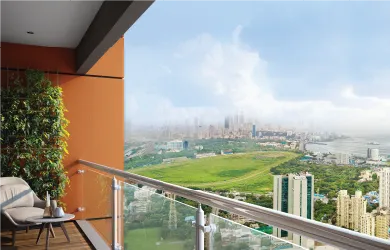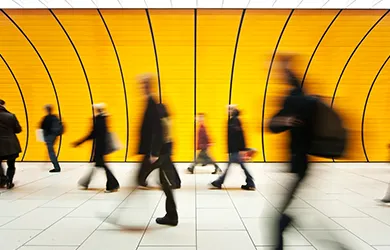- Our Story
- Our Impact
-
Our Projects
Residential
Commercial
- Careers
Atal Setu Bridge: Route, Lanes, Total Cost, Speed Limit and All You Need to Know
By LODHA
August 28, 2023As the financial capital of India, Mumbai is home to an ever-growing population that fuels the corporate powerhouses and the cultural hubs that operate here. Over the years the metropolis has expanded from the original seven islands that converged to form the peninsula. Today, navigating through the urban labyrinth of Mumbai reveals the need for robust and swift transit options. The Mumbai Trans Harbour Link (MTHL) also known as Atal Setu bridge stands as a transformative milestone in this narrative, promising to reshape the mobility framework of this vibrant city.
The Mumbai Trans Harbour Link (MTHL) is designed to alleviate congestion within the city by enhancing connectivity between the island city and the mainland, particularly Navi Mumbai. This vision for the development of the Navi Mumbai Region was conceived around three decades ago; the plan involved constructing a bridge connecting Sewri on Mumbai Island to Nhava on the mainland, specifically Navi Mumbai. This initiative aims to accelerate traffic flow between Mumbai and Navi Mumbai, as well as streamline traffic movement from Mumbai to destinations like Pune and Goa.
Atal Setu Bridge/MTHL is the longest sea bridge in India, spanning 22 kilometres. With a capacity for about 70,000 vehicles, the sea bridge has already completed the construction and placement of slabs, yet the Mumbai Metropolitan Region Development Authority (MMRDA) has deferred the launch to November 2023. This decision is influenced by safety considerations and ensuring optimal functionality of all components.
Evolution from Concept to Construction
The history of the Mumbai Trans Harbour Link traces back to 1963, initially proposed as the Uran Bridge. After facing setbacks, the project gained momentum in 2006 when IL & FS proposed a Build Own Operate Transfer (BOOT) model, but it was eventually shelved. In 2017, the Maharashtra government assigned the Mumbai Metropolitan Region Development Authority (MMRDA) to oversee the MTHL project, adopting the Engineering - Procurement - Construction (EPC) model. The project received official development funding of around Rs 18,000 crore from the Japan International Cooperation Agency (JICA).
MTHL Project Details:
- Length- Extending for 22 kilometres
- Name- Known as the Mumbai Trans Harbour Link or Atal Setu or Navi Mumbai Sea Link
- Connection- Links Mumbai with the mainland
- Location- Commencing from Sewri and concluding at Nhava Sheva
- Travel Time Reduction- Expected to cut travel time from the current 2-3 hours to approximately 20
minutes
- Ownership- Mumbai Metropolitan Region Development Authority (MMRDA)
- Estimated Cost- Budgeted at over Rs 17,800 crore
- Funding- Supported by 85% funding from the Japan International Cooperation Agency (JICA)
- Project Model- Executed under the Engineering, Procurement and Construction (EPC) model
- Width- It spans a width of 30.1 metres
- Number of Lanes- Incorporates six lanes
- Deck Completion- Construction of the deck is completed
- Maximum Speed Limit for Vehicles- Allows a maximum speed limit of 100 kmph
- MTHL Project Current Status- It was inaugurated and opened on January 12, 2024.
The Impending Influence of the Mumbai Trans Harbour Link on the Real Estate Sector
The Mumbai Trans Harbour Link is poised to have a substantial impact on the real estate landscape in the city and its neighbouring regions. This bridge's introduction is expected to significantly enhance connectivity among various mainland communities such as Navi Mumbai, Panvel, Karjat, Kalyan, Badlapur, Dombivli, Turbhe, Ghansoli, Airoli, Ulwe, Dronagiri, Ambernath, and Vasai. It will also lead to improvements in accessibility between South Mumbai and the Raigad district.
Even though these areas already enjoy reasonable access to Mumbai through existing roads and bridges, the completion of the Mumbai Trans Harbour Link is predicted to bring about a substantial reduction in travel times. This bridge will seamlessly link key arteries like the JNPA, the Mumbai-Pune Motorway, the Mumbai-Goa Express Highway and the proposed Navi Mumbai International Airport.
Additionally, a surge in demand for both residential and commercial properties near the MTHL is
predicted to escalate, due to improved connectivity. Navi Mumbai is poised to experience a surge in
property appraisal as it becomes more seamlessly linked with Mumbai. The area is likely to attract
individuals seeking budget-friendly yet well-situated properties, including both homebuyers and
investors.
Renowned real estate developers in the country have already initiated under-construction projects in
Mumbai in proximity to the MTHL project. This move is a strategic response to the projected surge in
demand for housing units due to improved connectivity.
Moreover, enhanced accessibility will offer residents of these regions an expedited commute to work, school and other destinations. For individuals employed at Lodha Commercial and Lower Parel, the MTHL project signifies enhanced accessibility and connectivity between South Mumbai and Navi Mumbai. This transformation will also lead to a noticeable uptick in economic activity within these localities. The project is set to generate a plethora of new prospects for businesses and employment and open up fresh avenues for investments. Beyond a mere infrastructural addition, it is a catalyst for progress that promises to reshape connectivity, opportunity and economic vitality across the board. In parallel, businesses will also enjoy more streamlined transportation for their goods and services, contributing to overall economic efficiency.
In an era where seamless connectivity drives progress, the MTHL emerges as a bridge not only between physical locations but also toward a future teeming with untapped potential. As its foundations solidify, so does the groundwork for a more prosperous and interconnected region.
You may also like



 Enquire
Enquire
 Call
Call
 Search
Search



